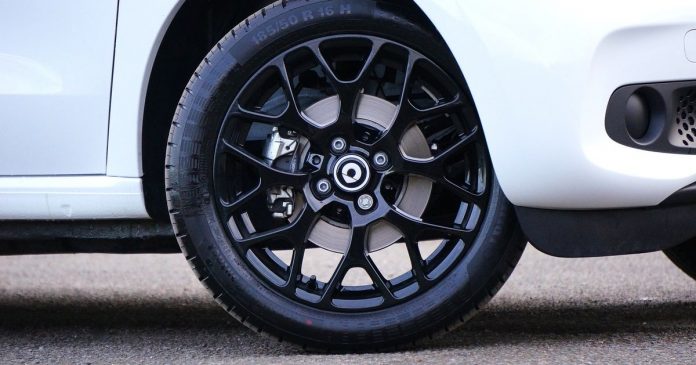Drivers are warned to conduct multiple security checks on their car this summer to avoid being fined up to £ 2,500 and three points for using a vehicle in a dangerous condition.
If the offense is committed within three years of a previous conviction for a similar offense, drivers are also subject to mandatory disqualification.
Mike Thompson, Director, Leasing Options, said, “After a year of public uncertainty, it’s great to see people take a well-deserved break and go on road trips to do some simple quick checks to make sure their vehicle is in one safe state to drive long distances.
“Drivers who do not do this could risk a breakdown while driving and face a fine if their vehicle is found to be in a dangerous condition.
“To prevent this from happening, drivers should check the inside and outside of their car for defects before heading out on their fun stay.”
Check your tire tread so as not to break the law
Average new tire cost: £ 79 (based on Ford Fiesta)
In the UK, it is a legal requirement that passenger car tire tread depth is at least 1.6mm over the middle three quarters of the tire. The tread must meet this minimum requirement over the entire circumference, otherwise your vehicle will be considered in a dangerous driving condition and driving in such a condition is illegal.
The easiest way to check the tread depth of your tire is with a 20 pence coin. Take the coin and insert it into the tread grooves on the tire. If you can see the outer band on the coin, your tires could be below the legal limit and need to be checked by a professional.
Check for signs of a slow flat tire
Average repair costs per tire: € 35
Not all flat tires are immediately noticeable. Often times, slow punctures can go undetected for a long time, resulting in a slow loss of air which then leads to a drop in pressure. This puts all passengers at risk, as the tire cannot develop its full potential.
Before you start your journey, check for signs of a slow flat tire by checking your tires with a tire pressure gauge (available at most petrol stations). The biggest warning signs to look out for when driving with a slow flat tire are if your vehicle pulls more sideways when traveling straight ahead or if the steering wheel is losing air, especially at high speed, caused by a bump in the wheel caused by a tire.
A hard clutch pedal is a sign of a defective clutch cable
Average cost to replace the clutch: £ 475
In manual cars, the clutch comes under pressure with every gear change. Over time, this can affect a vehicle’s clutch cables.
A major sign of a failing clutch pedal is a hard clutch pedal. A struggling cable will find it difficult to move when the clutch pedal is depressed, resulting in a pedal that resists being trodden down when depressed. If you keep stepping on the pedal, the cable may tear. The result is an inoperative clutch pedal.
If you notice any change in clutch feel, you must take your vehicle for inspection immediately. Driving with defective clutch cables can lead to serious accidents.
Beware of tire valve failures
Average repair costs per tire: € 35
Tire valve failure can be a cause of slow flat tires, so it is important that motorists know how to check if their tire valve is failing. A handy way to check this at home is to put some dish soap in water, remove the valve cap, and smear the liquid over the tire valve. If bubbles form, the vehicle is most likely damaged in a tire valve.
Check for any signs of a coolant leak to avoid overheating the engine
Average car radiator replacement cost: £ 200
The vehicle’s radiator is the key component in a car’s larger cooling system, it is designed to allow coolant to flow through it. The coolant is pumped through the system via the water pump. The radiator is usually located in the front area of the vehicle and low down so that the cooler, dense air can flow through it while driving.
The airflow cools the coolant in the radiator and reduces its temperature as it flows around the system and back to the engine, maintaining the optimal operating temperature. When the vehicle is in slow-moving traffic or at a standstill, you may hear the radiator / coolant fan turn on. These are designed to suck air through the radiator, mimicking the airflow and cooling the coolant.
To do this, the vehicle requires its coolant to be at its maximum level, and leaks throughout the system reduce the radiator’s ability to cool the coolant, causing the engine to run hotter than it was designed to, resulting in damage.
If, while doing your weekly or monthly checks, you find that the coolant level is dropping and the system is sealed and you don’t need to keep topping up, keep a nose in the engine compartment for signs of leaks or oozing from the lower parts of the to recognize the front bumper.
You can find more stories from where you live at InYourArea.

